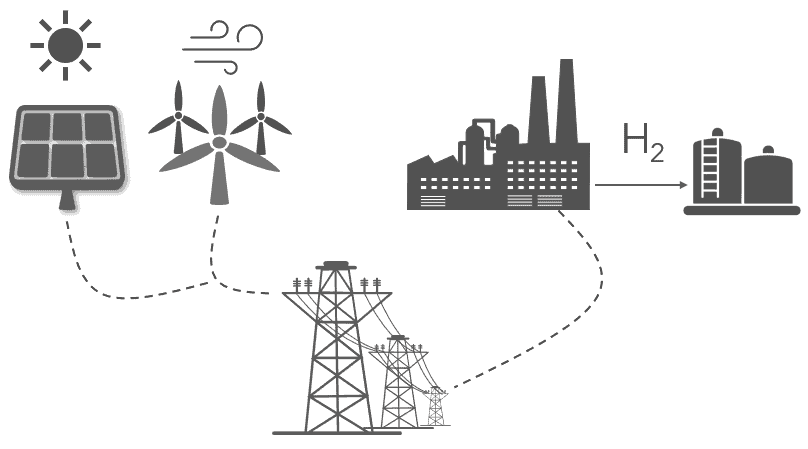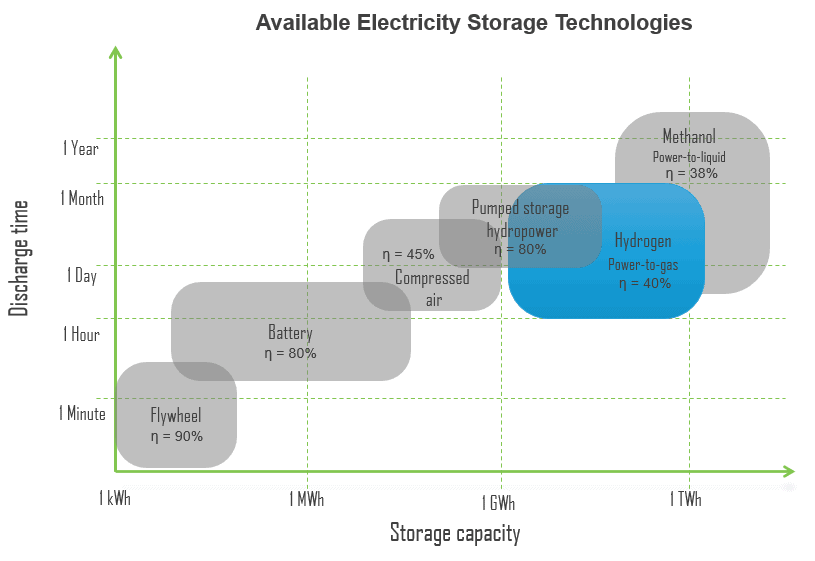Power-to-gas (often abbreviated P2G) is a technology that converts electricity to gaseous fuel (e.g., hydrogen). This technology converts the electricity generated during periods of high output and low demand (such as strong wind during off-peak hours) by splitting water into hydrogen and oxygen through electrolysis. The hydrogen is stored for future use as fuel, while the oxygen may be sold for industrial use or released into the atmosphere. Currently, this is the only promising seasonal energy storage technology. Moreover, P2G can help the intermittent production of energy by renewables to be evened out throughout the year by providing them a controllable power load, enabling them to have a bigger energy share.

There are three potential uses for the stored hydrogen:
- Using hydrogen gas directly (or blended with natural gas) in applications such as power generation or vehicle fuel
- Feeding fuel cells by injecting hydrogen and either oxygen or air into the cell to produce electricity from the resulting chemical reaction
- Combining the hydrogen (H2) with carbon dioxide (CO2) to create synthetic methane (CH4), which could be used as a replacement for natural gas
Power-to-gas systems may be deployed as adjuncts to wind parks or solar-electric generation. The excess s power or off-peak power generated by wind generators or solar arrays may then be used hours, days, or months later to produce electrical power for the electrical grid. Power-to-gas allows energy from electricity to be stored and transported in the form of compressed gas, often using existing infrastructure for long-term transport and storage of natural gas. Power-to-gas conversion is a potential storage solution undergoing advanced study and approaching commercial application. The main disadvantage of this technology is the relatively low efficiency of the electricity-gas-electricity conversion, which is caused by multiple energy conversions. In 2013 the round-trip efficiency of power-to-gas storage was well below 50%, with the hydrogen path being able to reach maximum efficiency of ~ 43% and methane of ~ 39% by using combined-cycle powerplants. The technology is being developed, but the other issue is the price for energy storage of the necessary capacity.
As simple as it sounds, the real challenge is the capacity needed to supply energy in all sectors (electricity generation, transportation, industry, and residential). We mostly talk about the share of low-carbon sources in power generation, which consumes “only” a third of fossil resources. Transportation, industry, and residential sectors consume about two-thirds of fossil resources. The transition of these sectors to low-carbon sources (e.g., using power-to-gas) is based on the transition of these sectors to low-carbon power generation with sufficient energy storage. The higher the share of these sources in the energy mix, the higher the transmission and energy storage system’s demands. Electricity generation has to triple (or more, assuming energy conversion losses) to achieve a low-carbon economy, and it must be based on low-carbon sources.
